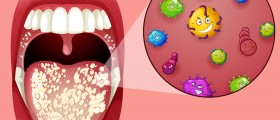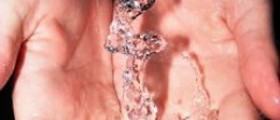Fungal infections are a common health complaint. However, most of the people experience problems with fungal infections on their skin and possibly on the intimate parts of the body. However, fungal infections can sometimes affect the areas in the mouth, and when this happens, they are known under the name oral thrush. Oral thrush, also known as the oral candidiasis, is caused by the same type of fungus that causes other fungal infections in the human body - Candida albicans. Less commonly, oral thrush may result from an overgrowth of Candida glabrata or Candida tropicalis. This common infection is most frequently diagnosed in babies, children and people with immuno compromised health. It may also be referred to as to candidosis or moniliasis.
Causes of mouth fungus
Candida albicans lives on almost all surfaces of the human body. Human immune system keeps this fungus at the optimum level by suppressing its overgrowth. However, under certain conditions, weakened immune system may fail to control the Candida albicans. When this happens, because the protective mechanisms fail, oral thrush infection conquers the surfaces of the mouth. People suffering from diabetes mellitus are at the high risk of developing mouth fungus infections. Saliva of these patients may contain large amounts of sugars, which can encourage the growth of Candida. People suffering from cancer typically have a weaker immune system, which happens because of the disease and the aggressive treatments. These patients are also at the increased risk of developing mouth fungus infection. People suffering from a human immunodeficiency viruses (HIV), which causes AIDS, are also more susceptible to opportunistic infections that a human body would normally resist.
Signs and symptoms of mouth fungus
Infections of the mouth caused by Candida species usually look like thick and white or creamy colored deposits on the tongue and mucosal membranes of the mouth. The surface of the mouth usually appears inflamed and sometimes even slightly raised. Patients typically complain about discomfort and feeling the burning sensation in the mouth. The creamy deposits are relatively easy to remove by light scrapping, but the resulting effect is commonly a slight bleeding. Other symptoms include a cottony feeling in the mouth, cracking in the corners of the mouth, and possibly a loss of taste. In most severe cases, the infection may spread from the mouth all over down to the esophagus.
The symptoms of oral thrush shouldn’t be neglected as it may indicate the presence of some other more serious disease such as diabetes. Patients should always seek medical attention if they notice painful white lesions inside the mouth.

















Your thoughts on this
Loading...